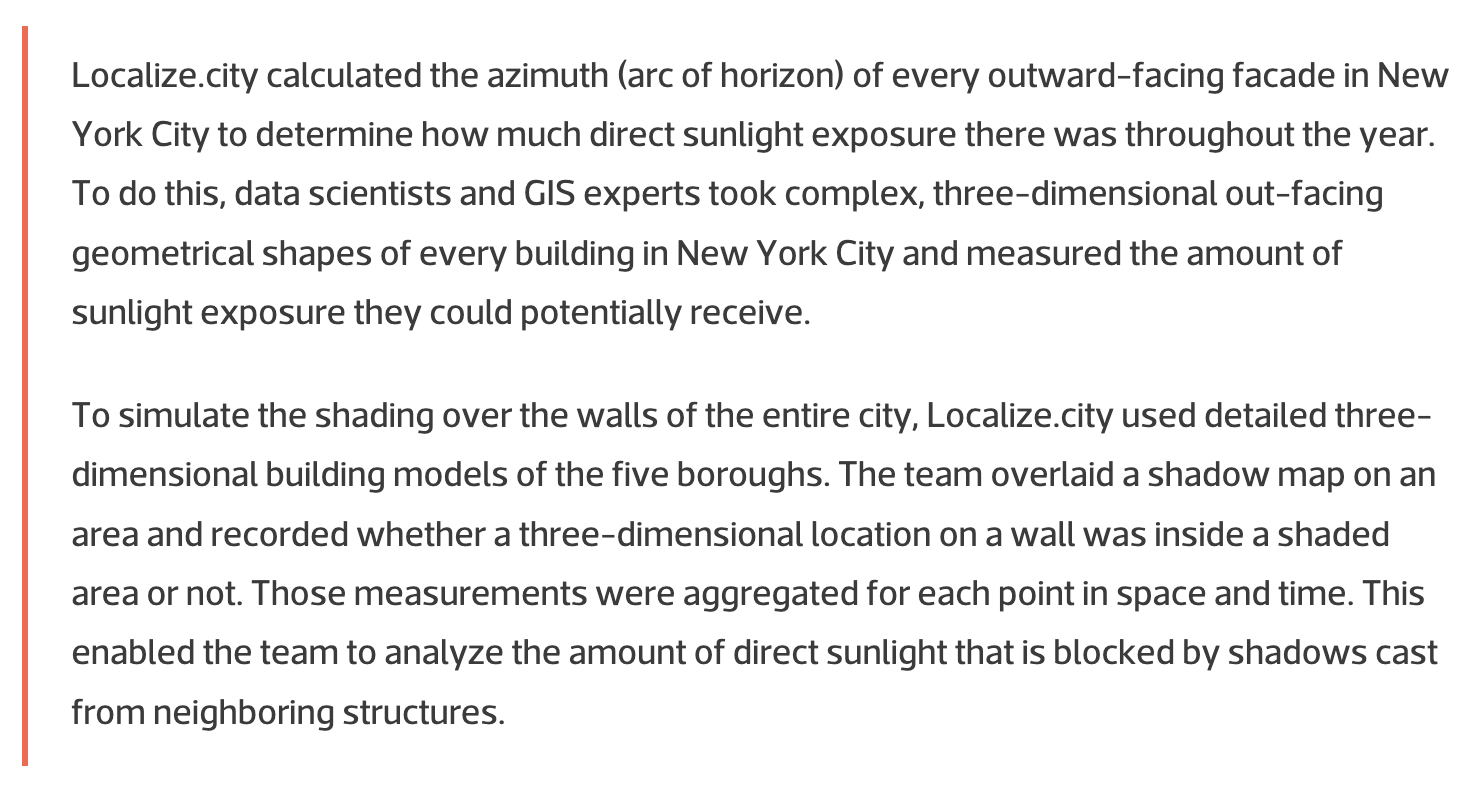Measurement Project
Light is essential and a daily part of humanity’s health and wellbeing, from providing vitamin D to being a crucial part of routines. This wonderful phenomenon brought by the sun and electricity also brings forth growth and helps my plants thrive and it is also the main component in my sculptures. Through the measurement project, I will attempt to quantify light in lux and compare it with online research data to determine if I and fellow New Yorkers are receiving enough sunlight.
Before we begin, what is lux? Lux (lx) is a unit of illuminance, measuring luminous flux per unit area or one lumen per square meter.
“One can think of luminous flux as a measure of the total "amount" of visible light present, and illuminance as a measure of the intensity of illumination on a surface. A given amount of light will illuminate a surface more dimly if it is spread over a larger area, so illuminance is inversely proportional to the area when the luminous flux is held constant”
The visual on the left outlines lux levels in various environmental conditions.
Direct Measurements performed with Light Meter
The visual on the left outlines the recommended light levels by Chartered Institute of Building Service Engineers.
The corridors at ITP have a light level of 140 lux, 40 lux more than the recommended amount. While the corridors are too dark for work, the natural light from the windows gives the benches 563 lux of light, making them suitable for prolonged work.
The restrooms at ITP are 1,672 lux, 1,522 lux brighter than the recommended amount. Perhaps ITP may choose to darken the restroom to save electrical energy.
The lobby at ITP is 320 lux, 120 lux more than the recommended amount.
The ITP workspaces have a lux level of 900 lux which is the ideal light level for students working on fabrication and/or intricate work.
On the other hand, the light levels in my apartment are all below the recommended amount apart from the windowsills. These measurements were taken with no lights turned on at around 12:00 pm. The solar light is not enough to properly illuminate my apartment.
While my windowsills were very bright, the windows were not big enough or there weren’t enough windows to adequately illuminate the rest of the apartment. Especially, the office building in front blocks all of the sunlight in one part of the apartment. Using data from the Centers for Disease Control and Prevention, New York is ranked #43 out of 48 states (excluding Hawaii and Alaska) with average annual sunlight of 3,904 kilojoules per square meter.
- Average annual sunlight: 3,904 kJ/m2²
- Percent of sunlight as compared to top state: 67.84%
- Percent change in sunlight since 1992: +16.47%
According to Alice Callahan, a writer for the New York Times, New Yorkers may be at risk of Vitamin D deficiency, especially during the winter times.
Originally, I wanted to use a tool called localize.city that created a way to estimate how much light an apartment will receive in New York City. I would have wanted to enter the address of my apartment and compare the light measurements with what was on the website. However, the website did not have any sunlight information regarding my apartment or that of the ITP building (370 Jay Street).















